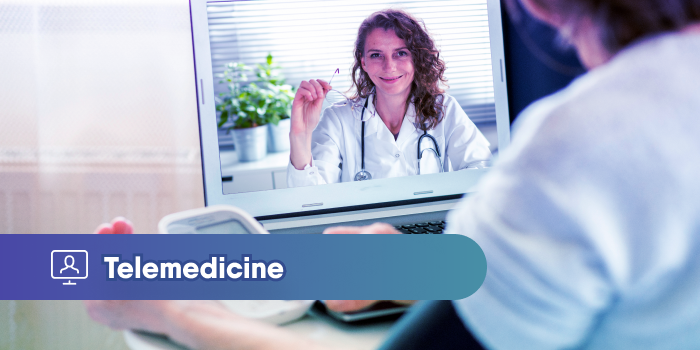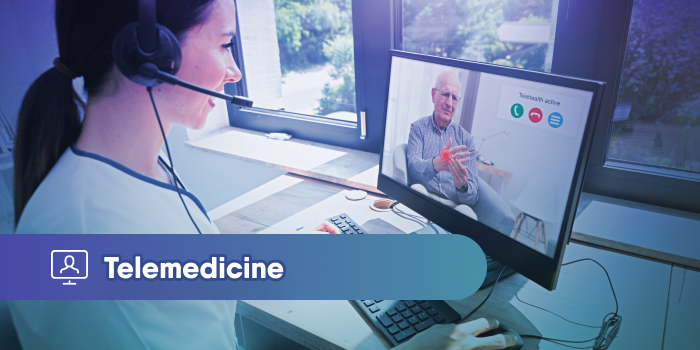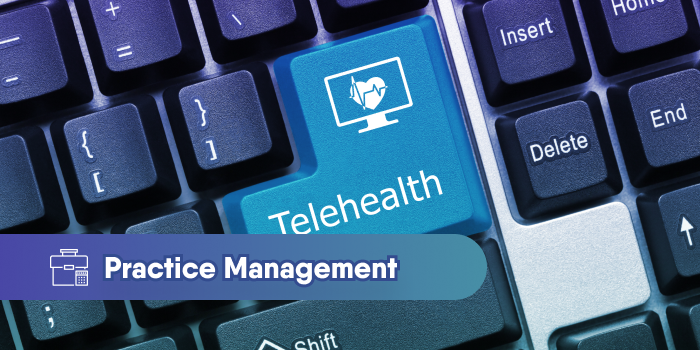7 Efficiencies Created by Telehealth Technology
Today, people are now more tech-savvy and generally more aware of their health thanks to the internet and a variety of health care apps. Because of...

Healthcare professionals (HCPs) have long sought and struggled to assess and improve healthcare quality in the United States. The Agency for Healthcare Research and Quality (AHRQ) and the American Academy of Family Physicians (AAFP) classify these measures as either structural, process, outcome, or patient-reported measures. AHRQ further elaborates that to obtain a clear picture of healthcare quality is to understand and evaluate the patient experience.
An integral component of healthcare quality, and the key to patient-centeredness, is improving the patient experience, alongside effectiveness and patient safety — a goal every medical practice aspires to accomplish.
How? Through telehealth. Regardless of how different states and medical boards define or limit telehealth, it has fundamental characteristics to satisfy and improve the patient experience.
Read on and learn essential points on how implementing telehealth in your practice improves the patient experience.
Patient experience refers to interactions patients have with doctors, nurses, and staff in clinics, medical practices, hospitals, and other healthcare facilities. It also refers to patients' actual encounters with the facilities, procedures, environment, and health institutions' processes.
More than meeting patients' expectations through patient satisfaction as a tool, the measure of patient experience centers on patients' actual experience, such as:
The Hospital Consumer Assessment of Healthcare Providers and Systems (HCAHPS) survey instruments measure the patient experience through well-tested questions that generate valuable information from patients—the best, if not the only source of patient-centric indicators.
Through HCAHPS, patients share different aspects of their experiences about an interaction or an encounter with an HCP, a treatment, or a specific policy (e.g., billing, admission). The collection of this data generates a standard and validated healthcare quality measure that other patients, HCPs, and other interested parties can refer to anytime it is needed.
The HCAHPS surveys, or the results thereof, are critical tools and references for individuals and institutions interested in evaluating the patient-centeredness of the care they deliver and identifying areas for improvement.
If patients are happy or have positive interactions and encounters with your practice, your HCAHPS score is high.
Awareness and consideration of the patient experience provide an advantage for providers in achieving patient-centeredness in care delivery. Recognizing the importance of patient experience also helps identify ways to improve it, such as with telehealth.
Curogram, a leading telehealth software provider in the United States, defines telehealth as the practice of delivering healthcare services to patients remotely through telecommunication technology, such as live, two-way video communication platforms or audio-only (e.g., telephone calls).
The AHRQ describes telehealth as telecommunications technologies to deliver health-related services and information that support patient care, administrative activities, and health education.
Telehealth gives more power to patients who want more control over their health. Because of telehealth's virtual health services and remote medical care, patients prefer it as it suits the modern patient population's constantly evolving mobile lifestyle. It makes healthcare more accessible than ever before.
A remote online health platform, telehealth improves access to healthcare anytime and anywhere. It reduces other possible expenses patients incur with in-person visits, such as transportation, childcare, or lost time at work.
Also, patients' access to care is of great concern in regions where the demand for doctors is far higher than availability. Telehealth reduces this gap and improves access and healthcare delivery in rural and urban settings in medically underserved areas.
With telehealth, patients receive medical care regardless of the distance. The need to travel from home to the doctor's office is no longer necessary. That offers a lot of convenience to most, if not all, patients, especially to those who need several hours of travel time to reach the nearest healthcare provider.
The same convenience benefits those too old to drive or commute, who are disabled, and those who need to look for child care before leaving home to see a doctor.
Even those who need to see specialists from another state benefit from telehealth. They won't need to spend money on transportation and accommodation anymore and wrestle with the stress and hassle that long-distance travel involves.
For working people, telehealth saves them time and money from not taking time off from work for an appointment with a doctor, or worse, prioritizing work and forgoing health. Telehealth allows patients to see a doctor anytime, even on a lunch break.
Implementing a patient-centered telehealth service can improve patient experience, and it’s easy and cost-effective.
Curogram is a telehealth platform that streamlines the delivery of remote healthcare services and allows doctors and patients an easy way to communicate and exchange medical information at a distance. With Curogram, patients can join a virtual appointment through a link they receive in an SMS and get the required medical care from a licensed healthcare professional in a matter of minutes.
Medical professionals benefit significantly from telehealth, increasing efficiency, saving on operational costs, and further improving patient experience and high HCAHPS scores.
Healthcare providers also benefit from telehealth and from the corresponding positive patient experience, and vice versa. These benefits include an increase in revenue resulting from an increased patient base, efficient office operations, improved staff workflow, and reduced patient no-shows.
Telehealth improves access to healthcare and expands a medical professional's reach to provide for more patients. An increasing number of HCPs from most states embrace telehealth because of the benefits it gives them in improving access to medical care and reaching patients regardless of their location.
Giving more access and expanding the reach to patients enables practices to also increase revenue. Offering telehealth services broadens your patient base, from rural patients to urban patients because of the convenience, lower cost, and less hassle. Given the opportunity, patients prefer to experience the more advanced and modern medical practice available through telehealth.
Office workflows and efficiency improve with telehealth's capability to allow your practice to obtain patients' medical information before virtual visits. Curogram, for example, automatically sends electronic patient intake forms a few days in advance of the scheduled virtual appointment.
In addition, Curogram integrates with any EHR and saves medical practices from manually encoding medical information. The platform also allows you to set up and start your virtual clinics, efficiently simulating a waiting room to quickly onboard patients when it's their turn and check out after their appointment.
Patient no-shows reduce when HCPs implement telehealth options. As telehealth satisfies patients' desire to control their schedules and cancel or reschedule appointments easily, there is a significant reduction in patient no-shows.
Some telehealth platforms, like Curogram, also offer features that reduce patient no-shows more dramatically. It allows you to create HIPAA-compliant text messages and SMS appointment reminders. The coolest thing is, your patients can respond via SMS if they need to reschedule, cancel the appointment, or have any inquiries. According to Curogram, medical practices that implement 2-way text messaging reduce no-shows by 75%!
Another telehealth feature that benefits medical practices and further improves patient experience is facilitating remote patient monitoring (RPM). Telehealth allows healthcare providers to monitor patients with chronic health conditions remotely through modern technology, giving them timely updates and insights into the patient's condition.
Telehealth uses modern telecommunication devices to allow HCPs to record, acquire, and analyze medical data without requiring patients to have an in-office visit.
A better patient experience results from implementing patient-centered care models and strategies in your medical practice.
Telehealth, so far, is the most multi-faceted patient-centric healthcare providing model. It solves office inefficiencies that save money and increase profits. But most importantly, telehealth improves patient experience like never before.

Today, people are now more tech-savvy and generally more aware of their health thanks to the internet and a variety of health care apps. Because of...

Telehealth enables patients to be more engaged with their healthcare providers as it provides them easier access and greater convenience to care.

Healthcare professionals (HCPs) consider finding a way to improve healthcare quality in the United States a critical undertaking to succeed in...